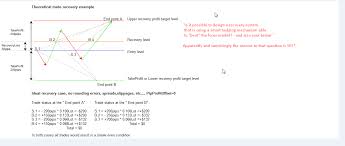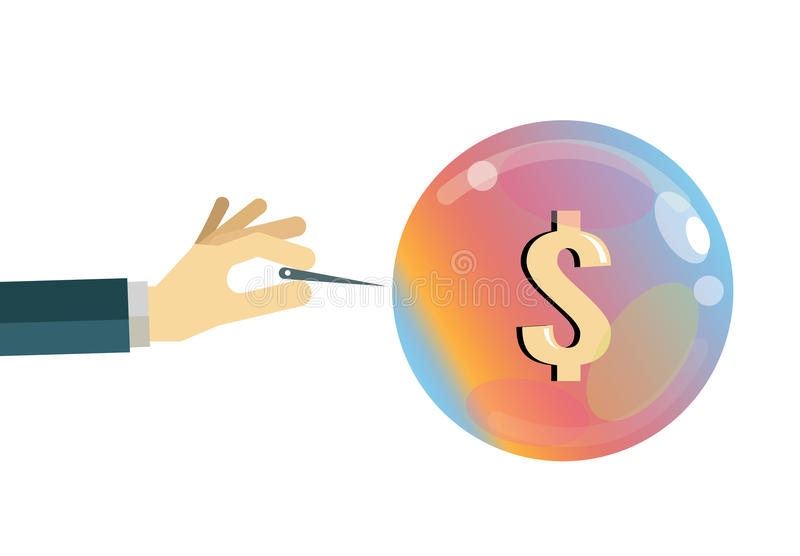
E-mini contracts may appeal to traders who want to invest in S&P 500. These contracts have lower margins and are comparable to full-sized options contracts. E-minis is a great investment tool to help individual traders.
E-minis, which were first introduced by Chicago Mercantile Exchange (CMEX) in 1997, are now available for purchase. E-minis were designed to make futures trading affordable for small investors and individual traders. Currently, the E-mini contract represents one-fifth the size of a standard S&P futures contract. This makes it an ideal instrument for traders who may not have the capital to buy a full-sized contract. E-minis can also be used to spread trade.
E-minis are available in two versions, Micro E-mini and Regular E-mini. The Micro E-mini is one-tenth larger than the regular contract and comes with a multiplier of $5. Traders can also choose to trade the Micro E-mini on a mobile trading platform. The Schwab StreetSmartCentral platform allows you to trade the Micro E-mini. The contract is available for trading six days a semaine. This is advantageous for individual traders who don't have the time to trade.

Micro E-mini S&P can be used as an investment tool by investors who have limited capital but want to invest in S&P 500. The Micro E-mini has a price of $5 per point, and can be traded all day. Micro E-mini S&P has recently been introduced to lower entry barriers for traders. It's a great tool for investors who want the ability to hedge their positions or manage stock allocation risk.
A clear goal is essential when trading on E-mini markets. They should have a plan for their entry, their stop loss, and their target position. A plan helps traders stay on the right track and reduces the risk of losing money. E-mini sessions come with many risks. But, you can also make money. If a trade goes well, investors can opt to terminate the trade. An investor can also try a different strategy if a trade fails to go as planned.
CME Group introduced the Micro E-mini S&P in May 2019. This contract allows investors the opportunity to position in the four largest U.S. indices, including the S&P 500 and the NASDAQ 100. It also offers weekly options for Wednesday and Friday expirations.
E-mini markets traders have many ways to make money. These strategies are not easy to execute and require patience. They also require a competitive edge to be successful. Traders should also have a mentor to help them develop discipline. They should have a plan that they can follow and try to win two trades. If they fail, they have the option to quit.

It is important to have a strategy for trading the Emini. This plan should include your entry, your stop loss and your target position. You must be consistent in your plan until you reach the goal.
FAQ
What's the difference between a broker or a financial advisor?
Brokers are specialists in the sale and purchase of stocks and other securities for individuals and companies. They handle all paperwork.
Financial advisors are experts on personal finances. Financial advisors use their knowledge to help clients plan and prepare for financial emergencies and reach their financial goals.
Banks, insurance companies and other institutions may employ financial advisors. Or they may work independently as fee-only professionals.
You should take classes in marketing, finance, and accounting if you are interested in a career in financial services. You'll also need to know about the different types of investments available.
What is a REIT and what are its benefits?
A real estate investment trust (REIT) is an entity that owns income-producing properties such as apartment buildings, shopping centers, office buildings, hotels, industrial parks, etc. They are publicly traded companies which pay dividends to shareholders rather than corporate taxes.
They are very similar to corporations, except they own property and not produce goods.
How are securities traded
Stock market: Investors buy shares of companies to make money. To raise capital, companies issue shares and then sell them to investors. When investors decide to reap the benefits of owning company assets, they sell the shares back to them.
The price at which stocks trade on the open market is determined by supply and demand. When there are fewer buyers than sellers, the price goes up; when there are more buyers than sellers, the prices go down.
There are two options for trading stocks.
-
Directly from your company
-
Through a broker
Why are marketable Securities Important?
An investment company's primary purpose is to earn income from investments. It does this by investing its assets in various types of financial instruments such as stocks, bonds, and other securities. These securities have certain characteristics which make them attractive to investors. They may be considered to be safe because they are backed by the full faith and credit of the issuer, they pay dividends, interest, or both, they offer growth potential, and/or they carry tax advantages.
Marketability is the most important characteristic of any security. This refers to how easily the security can be traded on the stock exchange. A broker charges a commission to purchase securities that are not marketable. Securities cannot be purchased and sold free of charge.
Marketable securities include common stocks, preferred stocks, common stock, convertible debentures and unit trusts.
These securities are a source of higher profits for investment companies than shares or equities.
What is a Bond?
A bond agreement between 2 parties that involves money changing hands in exchange for goods or service. Also known as a contract, it is also called a bond agreement.
A bond is typically written on paper, signed by both parties. This document contains information such as date, amount owed and interest rate.
The bond can be used when there are risks, such if a company fails or someone violates a promise.
Bonds can often be combined with other loans such as mortgages. This means that the borrower has to pay the loan back plus any interest.
Bonds can also be used to raise funds for large projects such as building roads, bridges and hospitals.
The bond matures and becomes due. That means the owner of the bond gets paid back the principal sum plus any interest.
If a bond does not get paid back, then the lender loses its money.
Statistics
- "If all of your money's in one stock, you could potentially lose 50% of it overnight," Moore says. (nerdwallet.com)
- US resident who opens a new IBKR Pro individual or joint account receives a 0.25% rate reduction on margin loans. (nerdwallet.com)
- Even if you find talent for trading stocks, allocating more than 10% of your portfolio to an individual stock can expose your savings to too much volatility. (nerdwallet.com)
- Ratchet down that 10% if you don't yet have a healthy emergency fund and 10% to 15% of your income funneled into a retirement savings account. (nerdwallet.com)
External Links
How To
How to open a Trading Account
To open a brokerage bank account, the first step is to register. There are many brokerage firms out there that offer different services. Some brokers charge fees while some do not. Etrade, TD Ameritrade Fidelity Schwab Scottrade Interactive Brokers are some of the most popular brokerages.
After opening your account, decide the type you want. These are the options you should choose:
-
Individual Retirement accounts (IRAs)
-
Roth Individual Retirement Accounts
-
401(k)s
-
403(b)s
-
SIMPLE IRAs
-
SEP IRAs
-
SIMPLE 401(k)s
Each option has its own benefits. IRA accounts have tax advantages but require more paperwork than other options. Roth IRAs allow investors deductions from their taxable income. However, they can't be used to withdraw funds. SIMPLE IRAs and SEP IRAs can both be funded using employer matching money. SIMPLE IRAs are simple to set-up and very easy to use. They allow employees and employers to contribute pretax dollars, as well as receive matching contributions.
You must decide how much you are willing to invest. This is your initial deposit. A majority of brokers will offer you a range depending on the return you desire. Depending on the rate of return you desire, you might be offered $5,000 to $10,000. The lower end represents a conservative approach while the higher end represents a risky strategy.
Once you have decided on the type account you want, it is time to decide how much you want to invest. You must invest a minimum amount with each broker. The minimum amounts you must invest vary among brokers. Make sure to check with each broker.
After choosing the type account that suits your needs and the amount you are willing to invest, you can choose a broker. Before selecting a brokerage, you need to consider the following.
-
Fees: Make sure your fees are clear and fair. Brokers often try to conceal fees by offering rebates and free trades. However, some brokers actually increase their fees after you make your first trade. Don't fall for brokers that try to make you pay more fees.
-
Customer service - Find customer service representatives who have a good knowledge of their products and are able to quickly answer any questions.
-
Security – Choose a broker offering security features like multisignature technology and 2-factor authentication.
-
Mobile apps - Find out if your broker offers mobile apps to allow you to view your portfolio anywhere, anytime from your smartphone.
-
Social media presence - Find out if the broker has an active social media presence. It may be time to move on if they don’t.
-
Technology – Does the broker use cutting edge technology? Is the trading platform intuitive? Are there any issues when using the platform?
Once you have decided on a broker, it is time to open an account. Some brokers offer free trials, while others charge a small fee to get started. After signing up, you will need to confirm email address, phone number and password. Next, you will be asked for personal information like your name, birth date, and social security number. You will then need to prove your identity.
Once verified, you'll start receiving emails form your brokerage firm. These emails contain important information and you should read them carefully. These emails will inform you about the assets that you can sell and which types of transactions you have available. You also learn the fees involved. Be sure to keep track any special promotions that your broker sends. You might be eligible for contests, referral bonuses, or even free trades.
Next, you will need to open an account online. Opening an online account is usually done through a third-party website like TradeStation or Interactive Brokers. Both of these websites are great for beginners. You will need to enter your full name, address and phone number in order to open an account. After this information has been submitted, you will be given an activation number. This code is used to log into your account and complete this process.
Now that you have an account, you can begin investing.